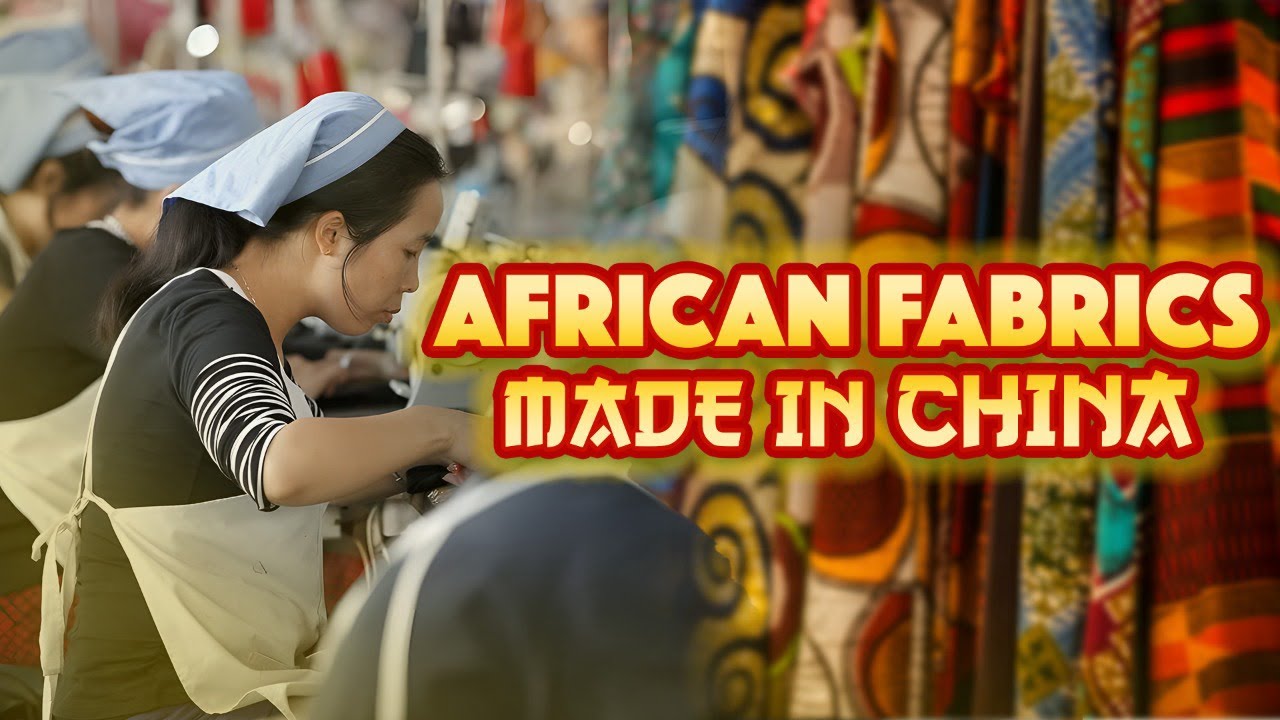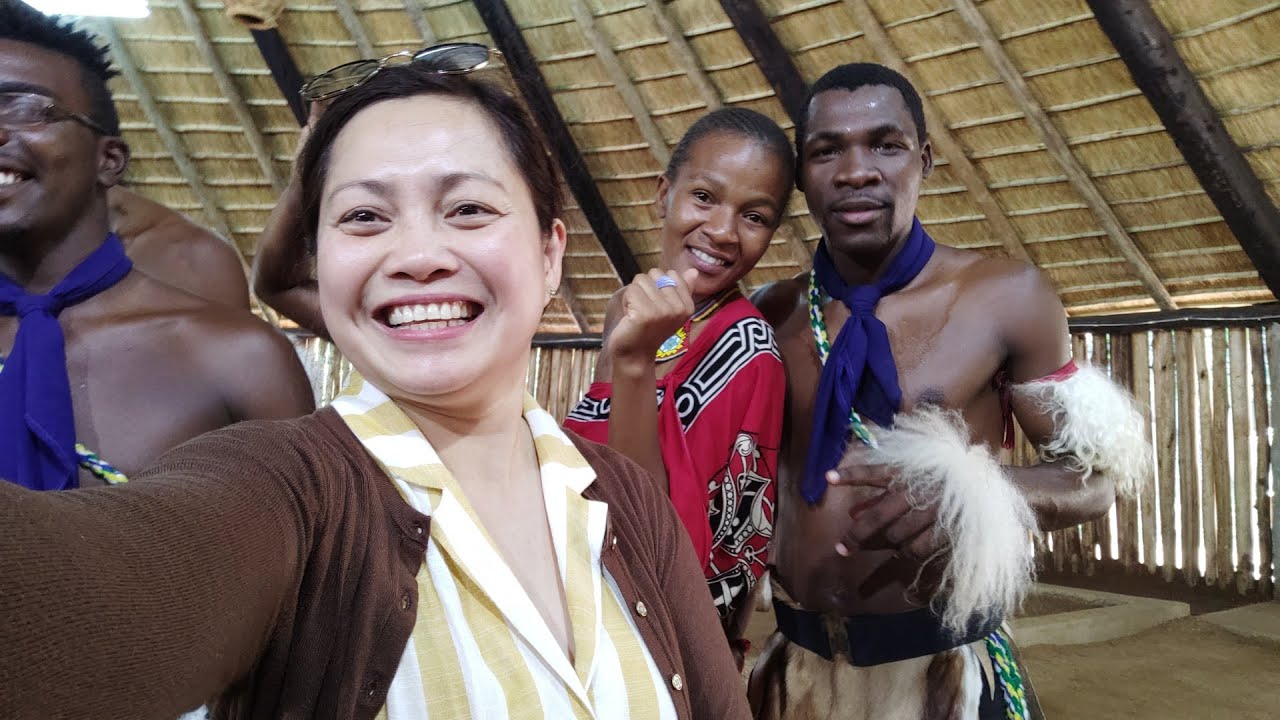
Chinese Takeover African Cultural Fabrics And Prints
Chinese Takeover African Cultural Fabrics And Prints
Wongel Zelalem a story about a Chinese takeover of cultural fabrics and the problem this is causing for locally made heritage textiles.
source
Reviews
0 %













I made it a point a long time ago to only buy Black-owned everything I can. I actually started switching out my wardrobe, too. The goal is to have my wardrobe composed of 100% Black-owned clothes, shoes, underwear, and socks by mid-next year.
I do not play about supporting my people.
It's horrible. The same thing done in our country India also in 1930's but gandhi and our people made lot of protests again the British clothes and we ended the British clothes
The prints were never african Holland had always dominated adrican prints
THAT IS HOW WHITE PEOPLE GO TO AFRICA AND STEAL DIAMONDS AND GOLD THEN TURN AROUND AND TAKE THE DIAMONDS AND SET IT IN A GOLD BAND AND SELLING BACK TO THE PEOPLE
People really need to start listening to Black Americans bc we saw this coming 50 miles away. We know about all these different peoples and how they move through this imperialist, white supremacist, capitalist patriarchy.
African wax prints, Dutch wax prints[1][2] or Ankara,[3] are omnipresent and common materials for clothing in West Africa and Central Africa. They were introduced to West and Central Africans by Dutch merchants during the 19th century, who took inspiration from native Indonesian designs.[4] They began to adapt their designs and colours to suit the tastes of the African market. They are industrially produced colourful cotton cloths with batik-inspired printing.[5] One feature of these materials is the lack of difference in the colour intensity of the front and back sides. The wax fabric can be sorted into categories of quality due to the processes of manufacturing. The term "Ankara" originates from the Hausa name for Accra, the capital of what is now Ghana. Initially used by Nigerian Hausa tradesmen, it was meant to refer to "Accra," which served as a hub for African prints in the 19th century.[6]
Well that's a wrap. Fabrics was nice while we had them. They're definitely about to be cheaply made now.
Send them back
Shouldnt let the chinese in thats all they do copy bring down value and get rich of it
Do need to buy it. Please.❤
They copy steal and counterfeit everything. Remember designer purses and fragrance?
That is why they say we are lazy.
Theyre pathetic
❤There selling African clothing on Amazon after watching this I wanted to see who the seller is. What you know the seller is in Japan, WOW 😮 who knew. Thank you for informing us on this I will always see who the seller is. 🙏🏾🥰🙏🏾🥰🙏🏾🥰🙏🏾
culture of consumption yet we have everything to survive
The Chinese have been doing this for YEARS – this is not a new phenomenon. They study American Africans – the food, the hair, the clothing…every aspect! They sell loads of so-called “African” centered attire – cowry shell necklaces, dresses, earrings, face masks, footwear, Kufi caps, pants, shirts, skirts…They have, actually, cornered the market on the “diashiki.” I have one. It cost $10. I washed it before I wore it. The colors faded in some areas but not in others and a seam unraveled along one side. Buyer beware.
africans are to blame. If you are african you know the truth. African clothing manufacturers charge high prices and failed to produce clothing to fit their market. We have nations of poor people and they did not look to scale production to reduce prices and never "united" to mass produce anything.
That's what you get when there's no ethics, no concerns for your people, no minimum wage laws, no copyright laws.
I hope Black buyers purchase from authentic African creators. Chinese people pay more for their Chinese-made products. Do the same to guarantee the continued existence of these businesses.
Cant blame the chinese, because it is business and what africa should do is to protect their profucts.
Greed is destroying the world 😢
Hold ur own nuts …we don't care LMAO WE TOLD Y'ALL
It's time people start learning how to prevent manufacturers from stealing their intellectual properties. If you have to send your items to China for them to produce them & they have to steal your ideas, "because they don't have a creative bone in their bodies," then figure out a way to do it yourself, & charge to appropriate price for your hard work, because before there where China you where doing it yourself.
Africa must do better to ensure their energy is place in ways to keep their economy and textiles market to the maximum. We are the biggest consumers, yet globally They must do better and acquire the means to use their skills more effectively.
I figured this was going to start 8 years ago when my friend told me that American soldiers were going to Africa.
Maybe our marketing is poor. Maybe African governments need to invest in local industries.
It’s sad how everyone steals from the indigenous people. This is what Africa has to deal with for letting them into the continent.
AFRICANS HAVE NEVER PRINTED THEIR FABRICS..SO, WHAT'S THE PROBLEM? INFACT, THE PRINT DESIGNS ARE NOT AFRICAN BUT EUROPEAN GENERATED😂😂😂